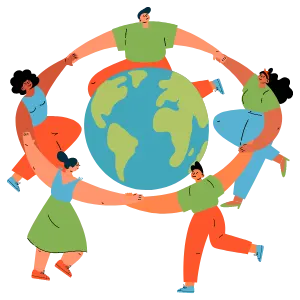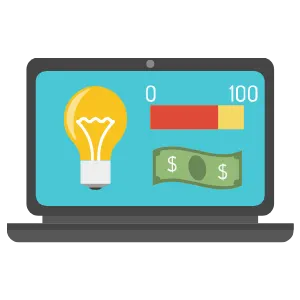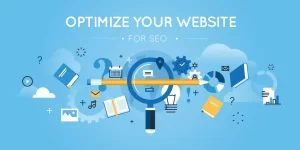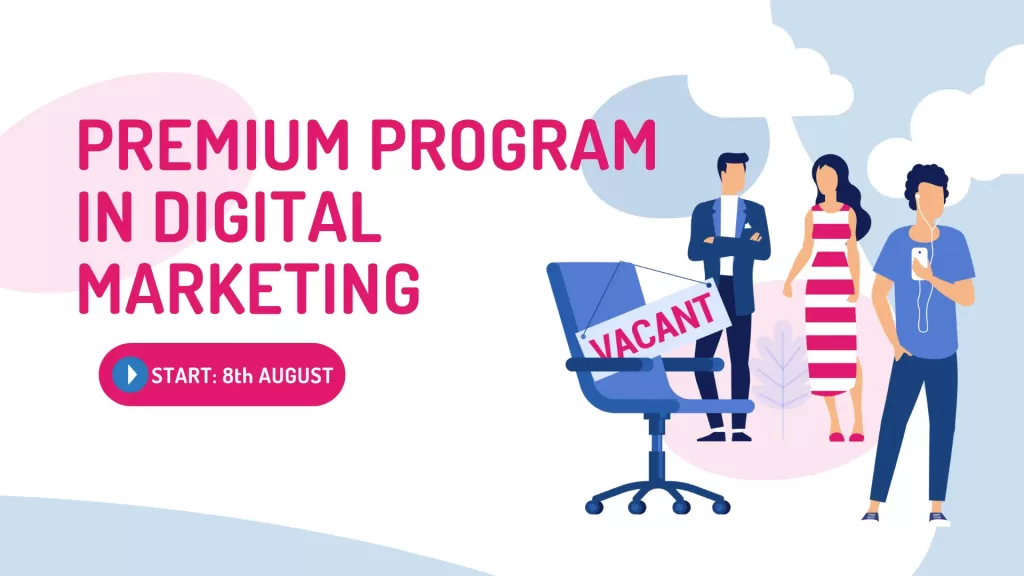There are many differences between traditional marketing and digital marketing. The most obvious is that traditional marketing relies on print, television, radio, and outdoor advertising to reach customers, while digital marketing uses the internet, email, and social media. Another big difference is that traditional marketing is a one-way street, while digital marketing is two-way communication. This means that with traditional marketing, the company talks to the customer, while with digital marketing, the company and customer can talk to each other.
The Complete Guide to Understanding the Difference Between Traditional Marketing And Digital Marketing
The digital age has ushered in a new era of marketing, and with it, a new way to look at the differences between traditional marketing and digital marketing. Though both have their merits, there are distinct advantages to using digital marketing techniques today.
Traditional marketing is often seen as outdated. It relies on billboards, commercials, and other out-of-home advertising methods that are no longer as effective as they once were. Additionally, it can be very expensive to produce traditional media such as TV and radio ads.
Digital marketing is more targeted and efficient. With online tools like social media and search engine optimization, businesses can reach a specific audience more easily and for less money than with traditional methods. Additionally, online campaigns can be easily tracked and measured for effectiveness, allowing businesses to make changes quickly based on results.
Digital marketing is important nowadays because it has replaced traditional marketing tactics. Digital marketing has become an important factor in the success of businesses today. There are five primary reasons for this: reach, engagement, targeting, measurement, and return on investment.
Reach. It’s what you can do with digital marketing.

With digital marketing, businesses can communicate with a global audience quickly and easily. There are no geographic boundaries when it comes to the internet, which means businesses can market to anyone, anywhere in the world.
Engagement is everything

Digital media has made it easier for businesses to connect with their customers on a personal level. Through social media platforms and interactive websites, businesses can create a two-way communication channel that allows customers to feel engaged and connected with the company.
Digital marketing is no longer just targeting

Digital marketing has replaced traditional marketing tactics because it is more efficient and targeted. With digital marketing, businesses can target their customers more effectively because they can segment their audiences based on demographics and interests. Additionally, businesses can track the performance of their digital marketing campaigns more accurately than they can track the performance of traditional marketing campaigns. This allows businesses to make adjustments to their campaigns as needed in order to improve their results.
Measure it. Optimize it.

The ability to measure and track results is one of the biggest advantages of digital marketing over traditional marketing tactics. With traditional marketing, it can be difficult to determine whether or not the campaign was successful. With digital marketing, you can track website traffic, leads generated, and sales conversions. This information can help you to determine the return on investment for your digital marketing campaigns and make necessary adjustments to improve results.
ROI in the palm of your hand

The main reason for this shift is that digital marketing is much more effective than traditional marketing methods. In fact, a recent study found that businesses that use digital marketing techniques enjoy a return on investment that is 11 times higher than those that rely on traditional marketing methods.
The Difference Between Digital Marketing and Traditional Marketing
Digital marketing and traditional marketing are both ways of marketing a product or service, but they differ in a few key ways. With digital marketing, you can target customers through their computers or other digital devices, while traditional marketing relies on more traditional methods like print ads, commercials, or direct mail. Digital marketing also tends to be more cost-effective than traditional marketing, and it allows you to track your results much more closely so you can see what’s working and what isn’t.
Why is there a shift from traditional marketing to digital marketing?
The world of marketing is constantly evolving as new technologies arise and consumer behavior changes. One of the most significant changes in recent years has been the shift from traditional marketing to digital marketing. There are a number of reasons why this shift has taken place.
Perhaps the most significant reason is that digital media provides an immediate, direct connection to consumers. With traditional marketing methods, such as TV, radio, and print ads, there is a delay between when the ad is aired or published and when consumers see or hear it. In contrast, with digital marketing methods such as websites, search engine optimization (SEO), and social media, consumers can be reached almost instantly. This immediacy makes it possible to respond quickly to changes in consumer demand and preferences.
Another reason for the shift to digital marketing is that it is more cost-effective than traditional methods.
1. Traditional Marketing is No Longer Working in Today's Market
In today’s society, technology has taken over and traditional methods of marketing are no longer effective. For example, in the past, businesses would place ads in newspapers or on television in an attempt to reach their target market, but now people are more likely to be using their phones or computers than watching TV or reading the newspaper. Additionally, with the rise of social media, businesses can no longer rely on word-of-mouth marketing alone to reach their consumers; they need to have a strong social media presence as well. As a result, businesses need to adapt their marketing strategies in order to stay competitive and reach their target market.
2. There is Greater Transparency in Digital Marketing
Nowadays, people are more likely to purchase items after researching them online. This is thanks to the transparency that exists in the digital marketing world. Advertisers can no longer hide their tactics, as consumers are able to see what they’re being shown and where they’re being directed.
This increased transparency has led to a rise in trust among consumers. They now feel confident that they can make informed decisions about the products they buy. As a result, digital marketing is becoming increasingly more effective.
Advertisers who use shady tactics will quickly lose credibility with consumers. Conversely, those who are transparent and honest will be rewarded with greater trust and loyalty. In order to be successful in today’s marketplace, it is essential to embrace transparency in digital advertising.
3. The Cost of Traditional Advertising and Marketing Methods are Rising
In the current business landscape, many companies are turning to unconventional methods of advertising and marketing in order to save money. However, it’s important to note that the cost of traditional advertising and marketing methods is rising. In fact, a study by the Economist found that spending on traditional advertising has increased by 5.8% since 2010.
There are several reasons for this increase. For one, technology has allowed companies to target their ads more specifically, which means they can be more selective with their spending. Additionally, social media has given consumers more opportunities to interact with brands, which has driven up the cost of marketing campaigns.
While it’s certainly tempting to cut costs by foregoing traditional advertising methods, it’s important to weigh the risks and benefits of each approach before making a decision.
4. Traditional Media Platforms Are Losing Revenue and Being Replaced by New Technology
As new technology replaces old media platforms, traditional media platforms are losing revenue. For example, in 2009, newspapers lost $25 billion in revenue due to readership moving online. Similarly, broadcast networks have experienced a 9% decline in viewership since 2010. This is largely due to the advent of new technologies that allow users to consume content in different ways. For instance, social media platforms like Facebook and Twitter allow users to share articles and videos with their friends, which increases traffic to those articles and videos. In addition, streaming services like Netflix and Amazon Prime users to watch TV shows and movies without commercials or time constraints. This has led to a decline in viewership for traditional TV networks.
It is important to note that not all traditional media platforms are experiencing a decline in revenue. Magazines, for instance, have seen a slight increase in revenue over the past few years.
5. Consumers' Buying Processes Have Been Changed by Social Media & Mobile Devices
The buying process for most consumers has changed in recent years, largely due to the impact of social media and mobile devices. Whereas consumers used to rely mainly on word-of-mouth from friends and family, or on advertising from brands, they are now turning to online reviews and social media platforms to inform their purchasing decisions.
This shift is particularly apparent when it comes to larger purchases such as cars or home appliances. A study by BrightLocal found that 88% of consumers now trust online reviews as much as personal recommendations, while a study by Google found that 61% of people use their smartphones to research products while in a store.
This change in consumer behavior has forced brands to rethink their marketing strategies. Instead of simply relying on traditional advertising methods, they now need to focus on creating compelling content that will appeal to potential customers online.
What Needs to be Done to Maintain the Balance of Power Between Digital and Traditional Media?
In conclusion, it is clear that a balance of power between digital and traditional media is necessary in order to maintain a healthy democracy. Digital media has many advantages, but it is also important to have a variety of sources of information in order to make informed decisions. Traditional media should not be allowed to die out, as it plays an important role in our society. We must find ways to keep both forms of media alive and thriving.






